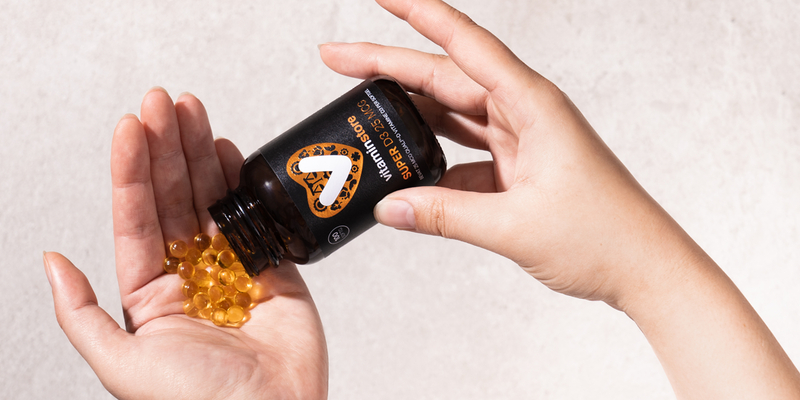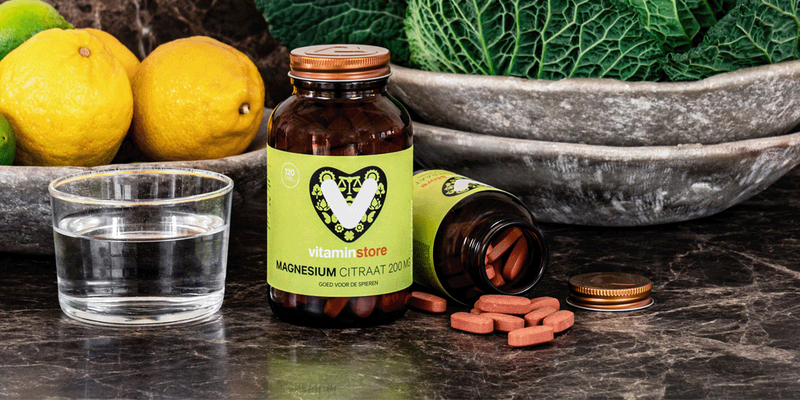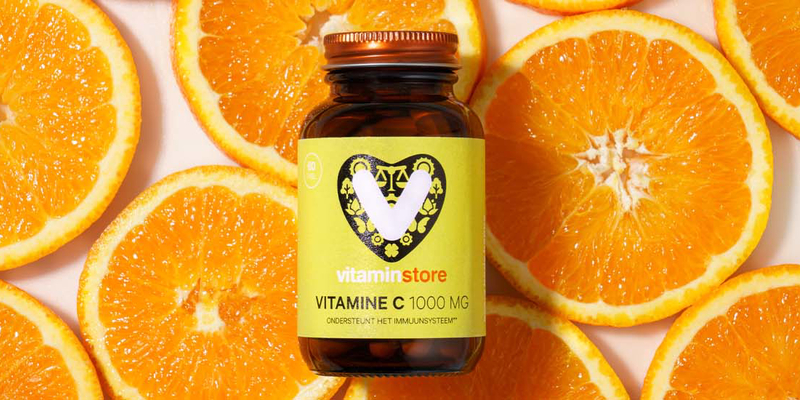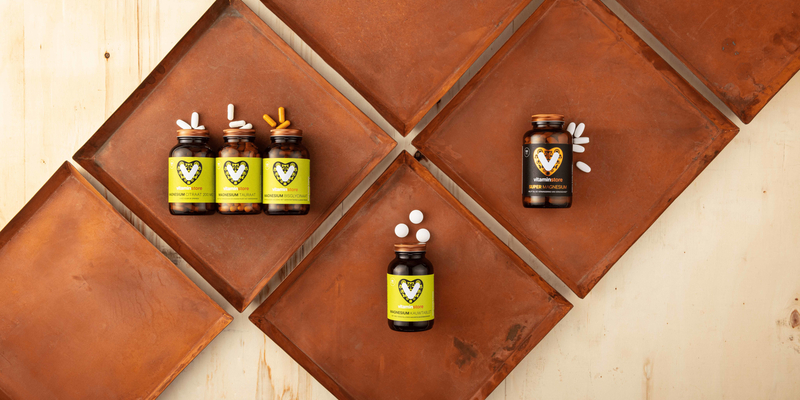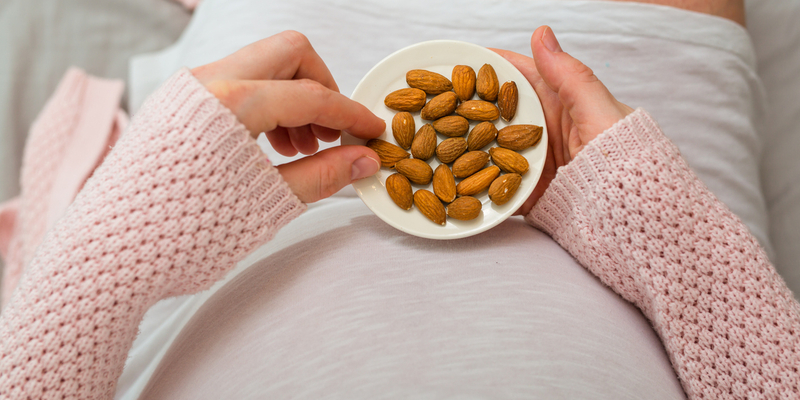
All About Vegan Vitamin D
We know vitamin D as an important vitamin for our body that we produce under the influence of the sun. What is less known is that vitamin D supplements are often not vegan. This vitamin is frequently derived from animal sources such as wool grease (lanolin) from sheep or cod liver oil. As a vegan, it can sometimes be quite a challenge to determine which products are suitable for your lifestyle. Fortunately, there are more and more plant-based alternatives available, including vegan vitamin D!
In this blog, we discuss why vitamin D is important, the different forms of it, and how you can ensure adequate vitamin D intake as a vegan.
What is vitamin D good for?
Vitamin D is a well-known vitamin for most of us. It is also called the sunshine vitamin and plays an important role in our body. Did you know, for instance, that this vitamin contributes to the absorption of calcium and phosphorus from food and increases the absorption of calcium in the bones? Both calcium and phosphorus are important for maintaining strong bones.
Vitamin D also has a positive effect on the immune system and thus contributes to good resistance. Not unimportant, therefore. Additionally, vitamin D is good for the muscles and supports normal muscle function. It even helps keep teeth strong.
There are many vitamin D receptors present in various cells and tissues in our body. This indicates that this vitamin has numerous biological functions.1
Different forms of vitamin D (D2 and D3)
Vitamin D is available in two forms: D2 (ergocalciferol) and D3 (cholecalciferol). You can primarily find vitamin D2 in plant-based sources such as mushrooms. Vitamin D3, on the other hand, is usually derived from animal products such as fish oil and liver.
There are also vegan sources of D3, such as lichen. These offer the same benefits as animal-derived vitamin D3. Studies have shown that vitamin D3 (the active form with high bioavailability) is better absorbed in our body compared to vitamin D2.2 Therefore, vitamin D3 is preferred.
Read more about the different forms of vitamin D and their absorbability.
Vitamin D as a Vegan: Why is it Important?
Everyone needs vitamin D, even if you lead a lifestyle that excludes animal products.3 As a vegan, it is important to carefully consider what you can use. Most natural sources of vitamin D are animal-based. Nevertheless, it is crucial to get enough vitamin D during months when sunlight is limited or if you spend little time outdoors. Therefore, it's good to find alternative sources of vitamin D and possibly use additional supplements.
Vitamin D from a Plant-Based Diet
Although plant-based foods do not contain much vitamin D, there are some sources that can help increase your intake.4
Mushrooms exposed to UV light can be a good source of vitamin D2. Additionally, there are fortified foods such as plant-based milk and cereals that contain vitamin D. You can find vitamin D2 in plant-based foods, but this is the inactive form of vitamin D that is less well absorbed by the body.5 Therefore, when following a plant-based diet, it is important to pay extra attention to your vitamin D3 intake.
Vegan Vitamin D from Lichen
Plant-based vitamin D3 comes from a special, plant-based source known as lichen. It is approximately 80% more effective than plant-based vitamin D2 derived from mushrooms.6
But what exactly is lichen? Lichen consists of a fungus and an alga. These two have an important symbiosis with each other, meaning they need each other to survive and mutually benefit from each other. The fungus protects the alga against weather influences by covering the entire surface of the alga. In return, the alga provides nutrients such as sugars for the fungus.
To protect itself from UV light from the sun, lichen produces large amounts of vitamin D3. Vitamin D3-rich oil can be pressed and extracted from lichen using high pressure and plant-based alcohol. This oil is then purified to remove any impurities.

Combining Vitamin D and K as a Vegan
Vitamin D3 comes from lichen. Vitamin K2 is found in other fermented foods, such as cheese, sauerkraut, and natto, as well as in animal products like liver and egg yolk. Natto is fermented soybeans, a delicacy in Japan.7
Vitamin D and vitamin K are fat-soluble vitamins that work well together in the body. This is also called synergy. Vitamin D3 ensures that calcium is well absorbed from food, and vitamin K2 contributes to the absorption of calcium in the bones.
Due to the amount of calcium absorbed from food with higher doses of vitamin D3, vitamin K2 is a great addition. Vitamin D3 and K2 both play a role in bone formation and the maintenance of strong bones. Furthermore, vitamin D is good for the muscles and supports the body's immune system, while vitamin K contributes to normal blood clotting.
How Much Vitamin D Do You Need?
The recommended daily amount of vitamin D depends on age, gender, skin colour, health status, and how much time you spend in the sun. Generally, the following daily intake is recommended9:
- Babies up to 1 year: 10 micrograms (400 IU). Read more about vitamin D and K for babies.
- Children aged 1 to 18 years: 10 micrograms (400 IU)
- Adults up to 70 years: 10 micrograms (400 IU)
- Adults over 70 years: 20 micrograms (800 IU)
- Pregnant and breastfeeding women: 10 micrograms (400 IU)
Sun Exposure and Vitamin D
Exposure to sunlight is a natural way to produce vitamin D. When your skin is exposed to UVB rays from the sun, your body starts to produce vitamin D.9 Factors such as latitude, season, time of day, skin colour, and the use of sunscreen can affect the amount of vitamin D you produce. For vegans and people living in northern latitudes, it is advisable to ensure sufficient sunlight exposure.
Good to Know
For vegans, it is important to get enough vitamin D, especially since natural sources are often animal-based. Fortunately, there are vegan alternatives such as fermented foods and fortified foods and supplements from lichen. By being mindful of your diet and possibly supplementing with supplements, you can ensure you get the necessary amount of vitamin D. Always consult a healthcare professional before starting supplements.
Sources
- Wang, Y., Zhu, J., & DeLuca, H. F. (2012). Where is the vitamin D receptor?. Archives of biochemistry and biophysics, 523(1), 123-133.
- Armas, L. A., Hollis, B. W., & Heaney, R. P. (2004). Vitamin D2 is much less effective than vitamin D3 in humans. The Journal of Clinical Endocrinology & Metabolism, 89(11), 5387-5391.
- Weikert, C., Trefflich, I., Menzel, J., Obeid, R., Longree, A., Dierkes, J., ... & Abraham, K. (2020). Vitamin and mineral status in a vegan diet. Deutsches Ärzteblatt International, 117(35-36), 575.
- Benedik, E. (2021). Sources of vitamin D for humans. International Journal for Vitamin and Nutrition Research.
- Armas, L. A., Hollis, B. W., & Heaney, R. P. (2004). Vitamin D2 is much less effective than vitamin D3 in humans. The Journal of Clinical Endocrinology & Metabolism, 89(11), 5387-5391.
- Gangwar, G. (2023). Formulation of Lichen Based Pill a Natural Source of Vitamin D3 with a High Absorption Rate by Ambrosiya Neo-Medicine Pvt. Ltd. International Journal of Biomedical Investigation, 6(2), 1-10.
- Afzaal, M., Saeed, F., Islam, F., Ateeq, H., Asghar, A., Shah, Y. A., ... & Chacha, J. S. (2022). Nutritional health perspective of natto: A critical review. Biochemistry Research International, 2022(1), 5863887.
- Health Council of the Netherlands. (2012, 26 September). Evaluation of dietary reference values for vitamin D. https://www.gezondheidsraad.nl/documenten/adviezen/2012/09/26/evaluatie-van-de-voedingsnormen-voor-vitamine-d
- Gilchrest, B. A. (2008). Sun exposure and vitamin D sufficiency. The American journal of clinical nutrition, 88(2), 570S-577S


